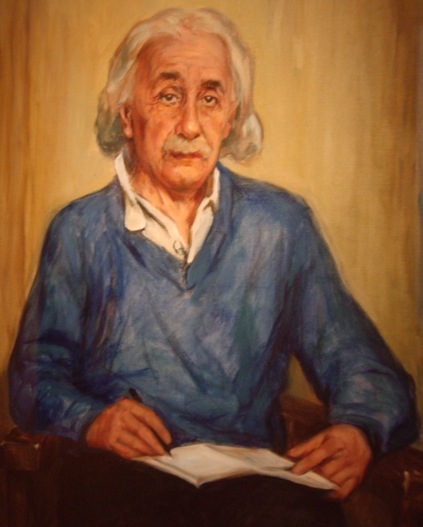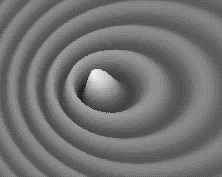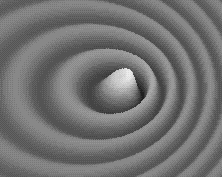
| E | ||||
| M | = | ––– | ||
| c | 2 | |||
 |
|
|||||||||||||||||||||||||||||||||
| E | = | M | X | |
|---|---|---|---|---|
| C2 | ||||
squared |
||||
| Energy | = | mass | the speed of light | |
| motion | equals | density of matter | times | 186,000 miles/, or 300,000 meters / second |
squared means to take a number and multiply it by itself such that two squared is four, four squared is sixteen, and sixteen squared is two hundred and fifty six.
| row | number | quantity squared |
|---|---|---|
| 1st | 2 |
4 |
| 2d | 4 |
16 |
| 3rd | 16 |
256 |
| 4th | 300k |
90,000,000,000 |
From the above we surmise that the speed of light squared is ninety billion (ninety thousand million) meters per second or 34,596,000,000 miles every second.
In one hour light travels 4 billion, seventeen million, six hundred thousand miles.
or more understandably in one second light travels more than seven times around our planet's equator!
![]()
Thus light travels so swiftly, that:
The story of this amazing insight based on the equation Einstein made renowned is discussed below.
 Michael Faraday first listened to by attending a talk where he
Michael Faraday first listened to by attending a talk where he
heard Sir Humphrey Davy speak on electricity.
The electricity he then used as a demonstration in the talk was to isolate sodium from salt and potassium from potash.
This was a serendipitous discovery in that Sir Davy had a lab accident, which he then pursued.
Sir Davy hired Faraday to be a lab assistant and avoid future accidents.
Öersted: in 1821, using a wire and compass, was able to comprehend electromagnetic forces.
Faraday later (1831) turned that magnet and
electricity into motion, creating an induction and the Law of Induction.
Nikola Tesla was in Strasbourg, France, where he built the first induction motor in 1882,
"invisible lines of force" emanating from an electrical wire (current)
"the great revolution"
Einstein felt that there was "something behind objects that lay deeply hidden" within matter.
| • becomes lighter, or less massive, | |
| Any rusting metal | • is it the same or equally massive, |
| • becomes more massive or heavier. |
No mass had been lost, merely transformed, as the iron oxide becomes more massive
or the conservation of mass is constant.
Matter recombines, nothing disappears
energy and mass
but what is light?
could we "ride on a wave" of light
670,000,000 miles in one hour
at that speed
light is an electromagnetic wave


that may act like a discreet (separate) particle.

This is called the wave-particle duality.
Light is unlike any other form of wave, it can never be static even if you are traveling as fast as light.
Emilie du Châtelet, published a translation of the Principia.
befriended Voltaire
She detected a flaw in Newton's idea of Mass times Velocity and conducted experimental tests of her, and others' assumption, that velocity is squared when determining the consequences of mass in motion.
But Leibniz argued that it is actually M*V squared.
| mass | times | Velocity | Squared |
|
|
|
v | 2 |
Light is the one constant.
It is a speed limit a boundary and a barrier.
atoms as miniature generators
nuclei are unstable and emit energy, that is mass turning into radiant energy.
238 neutrons & protons = Uranium symbolized on the periodic table as U; found in the mineral pitchblende when discovered in 1789.
- U 238, 99.3% of all U: radioactive isotope that decays very slowly with a half-life (in about) of 4,500 million years.
- U 233, an unstable fissile isotope, radioactive; decays slowly with a half-life (in about) of 159,200 years, from Thorium.
- U 235, 00.7% of all U: When enriched to 3% is suited for producing nuclear power because it emits alpha particles.
- U 239, is an isotope with a half-life of 23.45 minutes, and decays into Neptunium.
Fission
In the closing months of 1938 Hahn and Strassmann, found barium among the bombardment products after they had exposed uranium to slow neutrons, a group of subatomic particles that have no electrical charge.
Otto Frisch & Lise Meitner interpreted these strange results as fission, or split the nuclei apart or 200 MeV or (million electron volts) about 1/5th a proton mass is converted into energy.
See Our Chemical Heritage: firsts.
The source is David Bodanis, book by the same name: E=mc2.